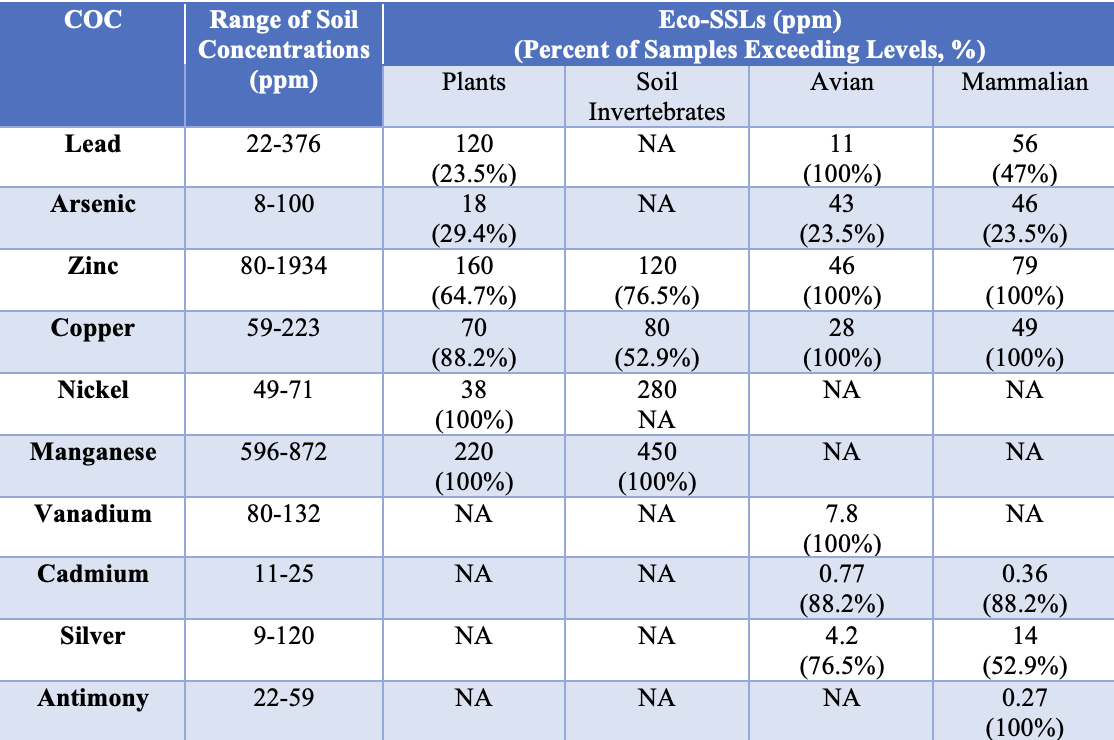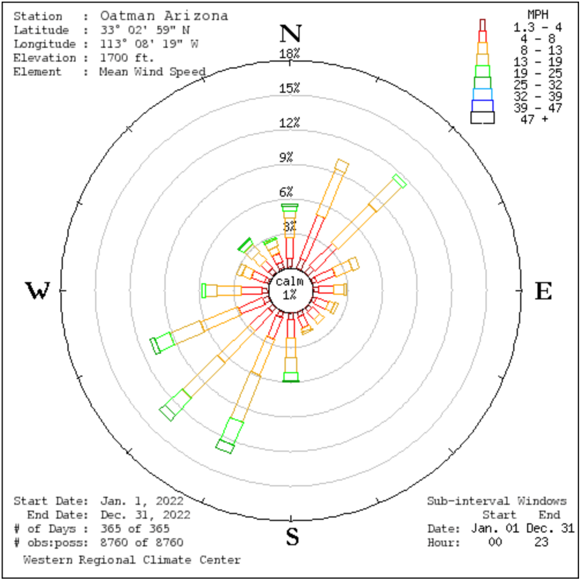Contaminate of Concern
The results from the XRF were compared to the non-residential Arizona Soil Remediation Standards (AZSRS) and the EPA Ecological Soil Screening Levels (ECOSSL) in order to identify the human health and ecological COCs . For each sample, the highest and lowest results for each element were removed and the remaining data were averaged to provide the soil concentration. ECOSSL’s are broken down into four categories: mammal, avian, soil invertebrates, and plants. The following tables show the COCs for both humans and the ecology :
Table 1: Human Health COCs
Table 2: ECO-SSL Exceedances


